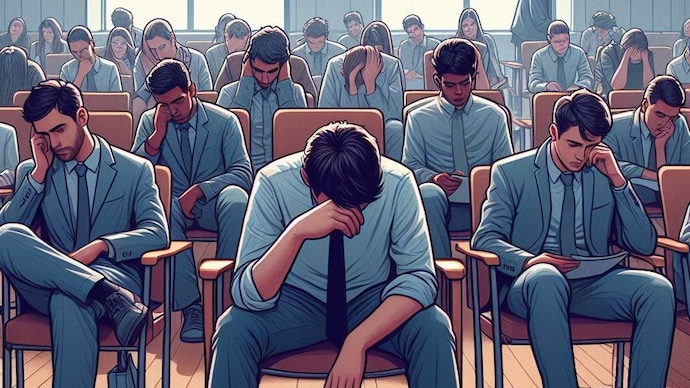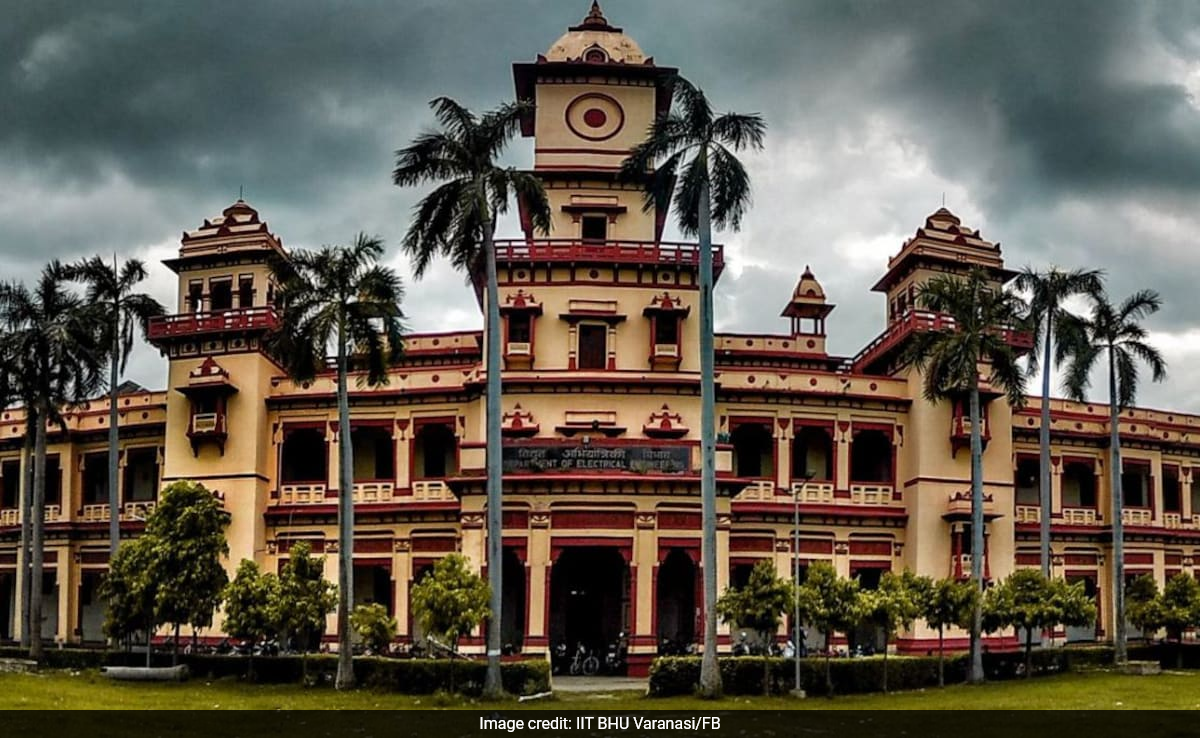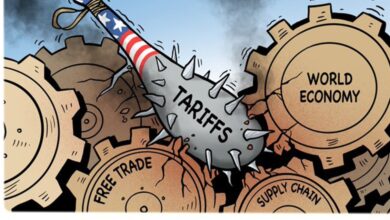The Great IITs Find Little Takers, Struggle To Get Students Placed This Season; The Global Impact Or Skill Gap? What Is Taking The Sheen Off India’s Best Engineering Brand?
The Indian Institutes of Technology (IITs) have stood as bastions of excellence in higher education, initially focusing on technological education and research to contribute to India's national development. In the current scenario, the prestigious Indian Institutes of Technology (IITs) are facing a challenging task in securing placements for their students, even after four months into the final placement season. Within the circles of higher education, there is a raging debate as to whether the IIT brand is killing itself.

All is not well with the IITs, the country’s finest technical education chain to which millions of youngsters have aspired since the 1950s.
Right in the middle of the ongoing final placement drive at India’s prestigious older Indian Institutes of Technology (IITs) including Delhi, Bombay (Mumbai), Kanpur, Madras (Chennai), Kharagpur, Roorkee, Guwahati, and Varanasi (BHU), the task of securing job placements for students remains daunting, even after four months.
This year, 5% of students at IIT Madras are yet to receive job offers, despite 2,100 students registering for placements, with only 1,150 successfully securing employment so far.
So, what is the story across other IIT campuses:
—At IIT Kharagpur, out of 2,644 registered students, 1,259 have been placed this year, compared to over 1,600 out of 2,486 last year.
—In Bhubaneswar, 212 students out of 298 registered have been placed, whereas in 2023, 247 out of 263 registered secured jobs.
Efforts are underway to attract more recruiters to the campuses as the placement season, which concludes in May-June for IITs, progresses.
IIT Bombay and IIT Delhi have disclosed official placement figures among the top institutions. As of April 4, IIT Bombay is a preferred choice for many; still, 33% of the 1,973 participating students are awaiting job offers.
Traditionally, the older IITs have been the most sought-after by candidates.
In addition to the eight established ones, India has seen the creation of 15 additional IITs since 2008, while IT-BHU transitioned into IIT-BHU (Varanasi) in 2012 through parliamentary legislation.
At IIT Delhi, of the 1,814 students enlisted with the Office of Career Services (OCS), 1,083 have secured placements as of April 5, leaving approximately 40% still in search of employment.
For undergraduate programs (BTech+dual degree), the placement rate is higher, with 81% of the 903 participants having secured jobs, according to information by the institute.
The performance of students in master’s/PhD programs has been less impressive, leading to a decrease in the overall hiring rate.
As per the placement and internship report of 2022-23 from IIT Bombay, approximately 82% of actively participating students, totaling 1,516 out of 1,845, secured employment by the end of the last season.
Similarly, IIT Delhi recorded an overall placement rate of around 84%.

The Winter Drought
This season, at least 30% of students across the older IITs remain without job offers, with offers declining by 15-25% compared to the same period last year, according to sources familiar with the situation.
Official placement figures are unavailable for the other older IITs apart from IIT Bombay and IIT Delhi.
Additionally, students are showing reluctance to accept offers from companies offering lower salaries.
A placement official at one of the older IITs mentioned, “We are encountering smaller companies offering salaries of Rs 5-6 lakhs, but students are inclined to wait for higher packages. There’s considerable pressure on them, given the prestige associated with IITs.”
The Contributing Factors
The global economic downturn and students’ awareness of it have contributed to the challenges faced by IITs in 2024.
For instance, IIT Bombay’s placement cell has highlighted the difficulty in attracting companies to campus due to the economic crisis.
Additionally, 60% of students at IIT Bombay prioritize job security over salary increments, with many emphasizing salary components over perks and benefits.
Other factors contributing to the struggle of IITs in placing students include
—Limited job opportunities – Some fields or industries have fewer job openings, leading to heightened competition.
—Skills gap – Certain students lack the ability to demonstrate or develop soft skills such as communication, teamwork, and interpersonal skills, impacting their placement prospects.
However, IITs are proactive in addressing these challenges and intend to invite new companies and startups in the second phase of placements.
Although some pre-placement offers (PPOs) have been extended, few international firms have participated thus far, possibly due to caution regarding over-hiring.
V Ramgopal Rao, former director of IIT Delhi and VC of BITS Pilani, estimates a 20-30% decline in overall placements this year due to the global economic slowdown.
Despite previous reservations, IITs are now open to considering Indian startups amid the challenging circumstances.
)
The Background
Established in 1950, the Indian Institutes of Technology (IITs) emerged as the pinnacle of higher education institutions, laying the foundation for India’s technological prowess.
With roots deeply embedded in collaborations with foreign technological universities, the IITs embarked on a journey aimed at contributing to national development by nurturing leaders in high-tech fields.
Excellence in Technology became the cornerstone of the IITs’ mission, with a primary objective to excel in technological education and research, aligning rigorously with global standards.
The commitment to National Development was evident as they aimed to significantly contribute to India’s progress by producing skilled professionals in engineering and technology, thus fueling the nation’s growth engine.
So, What Is Costing The Brand?
Widely regarded as Crown Jewels, the IITs attained global renown, emerging as India’s premier higher education institutions, renowned for producing leaders in high-tech fields, thus becoming symbols of national pride and excellence.
However, their journey hasn’t been devoid of challenges, with the phenomenon of Global Ventures such as IIT-Madras opening a branch in Zanzibar raising questions about international expansion strategies and their underlying purpose.
Despite being the epitome of India’s finest technical education chain, recent years have witnessed a decline in the sheen of India’s best engineering brand – the IITs.
In the path of Domestic Expansion post-2015, the IIT system encountered hurdles – the phenomenon of hasty expansion, faculty shortages, and falling student standards has tarnished the image of the country’s premier engineering institutions.
The Joint Entrance Exam (JEE), once known for its stringent standards, has shown signs of loopholes, potentially compromising the quality of entrants into the IITs.

The Great Divide
As the IIT system expanded rapidly over the last five years, concerns have arisen regarding the erosion of quality output, threatening the famed Brand IIT, which played a pivotal role in reshaping India’s global image.
With the number of IITs now totalling 16, including nine established post-2008, a divide has emerged in the perception of IITs.
Employers discern a clear distinction between the older IITs and the newer ones, with the former retaining their prestige and value.
This sentiment resonates widely among IIT alumni across the globe, who observe a dilution in Brand IIT due to increased numbers and perceived selectivity issues.
The Last Bit, as India’s crown jewels, currently, the majority of IIts are struggling to place their students; the same may be because of the current global scenario. Yet, questions are being raised regarding the skill gap.
Additionally, concerns have been raised regarding faculty shortage and rapid expansion, thus creating a need to reevaluate the path that IITs have paved for themselves.




